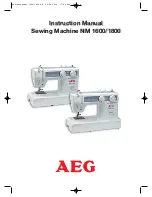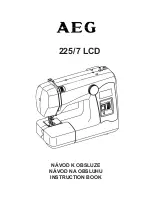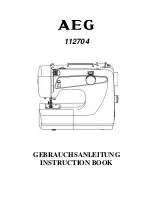
12
Propane Safety Information
Facts About LP Gas - Propane
As a fuel, Propane gas is unmatched for both safety and dependability. It has been used as a domestic household fuel for
over half a century, and for over thirty years as an internal combustion engine fuel. Propane is a highly flammable fuel that
is contained under pressure as a liquid. Vaporized gas has a similar explosive force to gasoline and mixtures as low as
2% LP Gas to air may be ignited in a closed environment. Care should be exercised to avoid escaping vapor as it can
freeze skin and cause frost bite. Vaporized fuel is heavier than air and will collect in the lowest confined space available.
Facts About Propane Tanks
Propane tanks are constructed according to ASME or Federal DOT #4ET20 pressure safety codes. Including the tank, all
valves and fittings are UL Listed. Propane gas is noncorrosive and will not rust the inside of a tank. Should the tank
exterior become damaged or rusted, discontinue use.
DO NOT
tamper with tank gauges or safety relief valves.
NEVER
use a tank not intended for use with a propane buffer.
DO NOT
substitute tanks that are used with a barbecue grill, etc.
ONYX recommends having propane tanks tested once a year by an authorized National LP Gas Association propane
dealer.
The fuel tank is supplied directly from the manufacturer and is void of fuel. This tank must be purged 'at the time of the
first fill. Local fuel vendors should be familiar with this operation and will provide this service.
Recommended Purge Procedures
How to purge new LP-Gas Buffer cylinders equipped with the Overfill Prevention Device:
New containers may contain vapor, air, or other contaminants. It is essential that these be removed before filling the
container and placing it into service. Air in the container will cause abnormally high pressure, with the result that the
pressure relief valve may open.
Air in the system is also likely to cause lean mixture, making ignition difficult.
If a cylinder
is suspected of being depressurized or open to the atmosphere for a period of time, it must be re-purged as if it were a
new container.
To purge a container, the following steps should be taken.
Purging of containers should be performed in an approved area (see NFPA 05 8) using NPGA #13 3.89(a) procedure.
1. Determine if the container pressure is zero. Should the cylinder contain only pressurized air, the air may be vented
directly to the atmosphere through the service valve using an adapter and the outage valve.
2. Pressurize the container to approximately 15 psig with LP-gas vapor.
Never purge with liquid LP-gas!
To do so will
cause the moisture vapor to chill and remain in the cylinder. LP gas liquid also expands 270 times to vapor making the
purge process ineffective.
Use LP-gas vapor only!
3. Make the connection to the quick coupler (A purge manifold system is most effective). Fully open the cylinder
service valve as well as the outage valve. Vent to a safe atmosphere. A vent stack is recommended.
4. On Overfill Prevention Device cylinders, the purge time is increased as a result of the new valve design. Opening the
outage
valve will help improve the speed of the purge.
5. Repeat #3 and #4 for a total of FIVE purges.
6. Repressurize the container with odorized LP-gas vapor to 15 psig.
7. The container is now ready to be filled with LP-gas.
8. Once filled, check all fittings and tank openings for leaks using an approved leak detector solution.
9. The container is now ready to be placed in service. Add DOT and OSHA labels.
Symptoms of a non-purge cylinder:
•
Relief valve opens due to over pressurized cylinder creating hazardous situation.
•
Moisture in the cylinder.
•
Buffer operates initially but shuts down when fuel mixture becomes too lean.
Refilling & Storing Propane Tanks
The NFPA Technical Committee prohibits the storage of such containers in buildings. There are few exceptions to this
rule. In other words, propane tanks should
NOT
be stored in buildings used by the public or frequented by anyone passing
through or who is working in the building. Full or empty, never leave tanks in small enclosed areas. The tank(s) must be in
a secure, tamper-proof storage enclosure that provides safety from accident or vandalism.
PROPANE TANKS SHOULD
ALWAYS BE TRANSPORTED, INSTALLED AND USED IN AN UPRIGHT POSITION
.
Summary of Contents for 19315
Page 2: ......
Page 20: ...Propane High Speed Burnisher ...
Page 22: ...24 24 Propane High Speed Burnisher ...
Page 24: ...Propane High Speed Burnisher ...
Page 26: ...Propane High Speed Burnisher ...
Page 28: ...Propane High Speed Burnisher ...
Page 30: ...Propane High Speed Burnisher ...
Page 32: ...Propane High Speed Burnisher ...
Page 34: ...Propane High Speed Burnisher ...
Page 36: ...Propane High Speed Burnisher ...
Page 38: ...Propane High Speed Burnisher ...
Page 40: ...Propane High Speed Burnisher ...
Page 42: ...Propane High Speed Burnisher ...
Page 44: ...Propane High Speed Burnisher ...
Page 46: ......
Page 47: ......
Page 48: ......














































